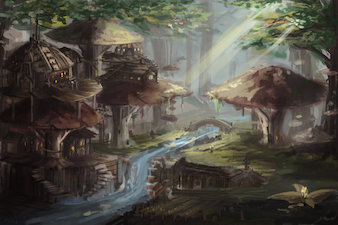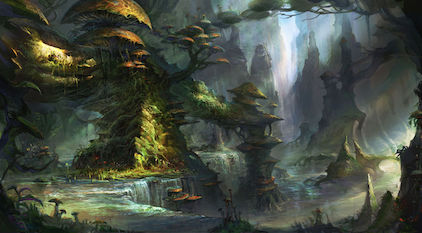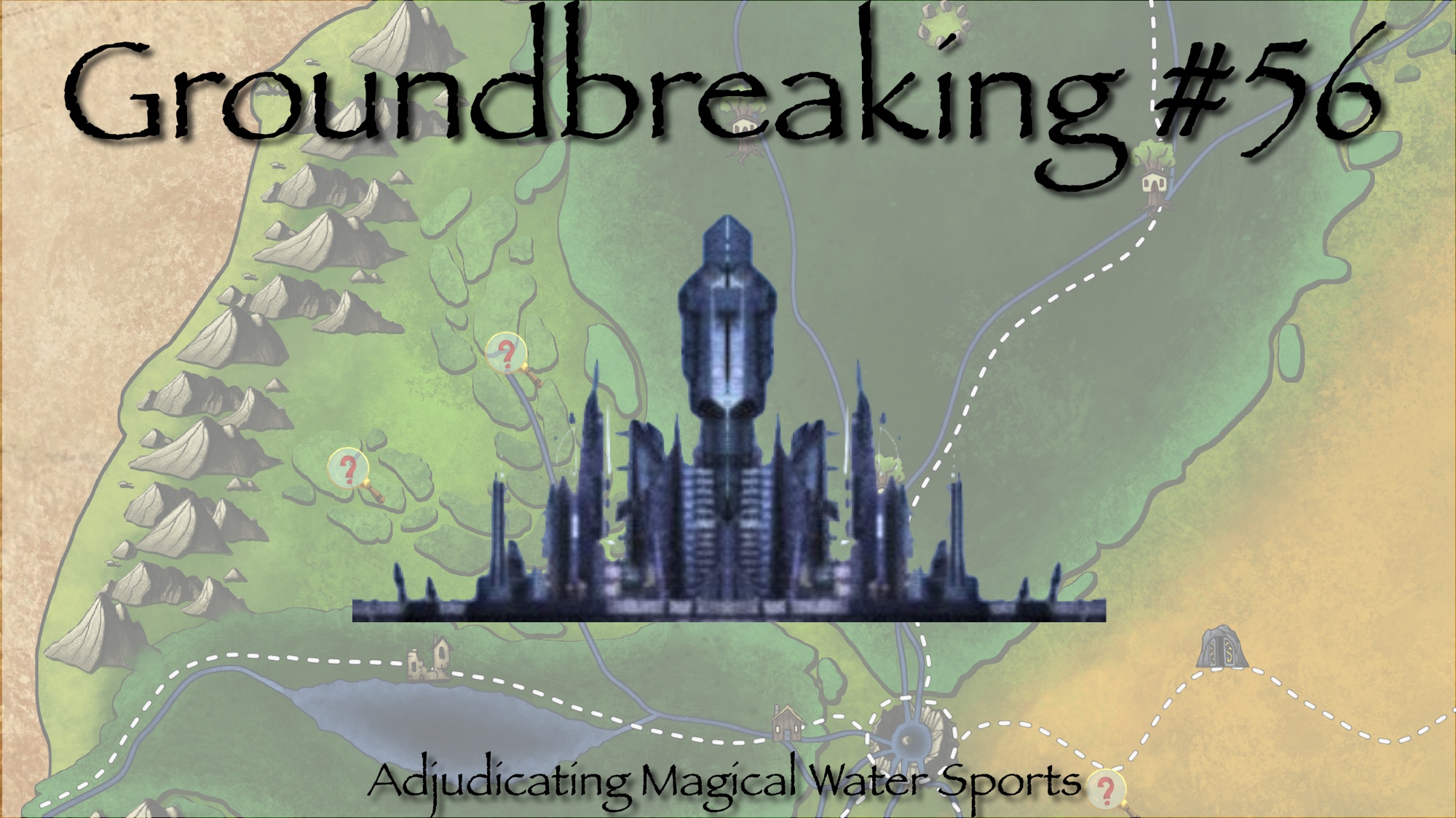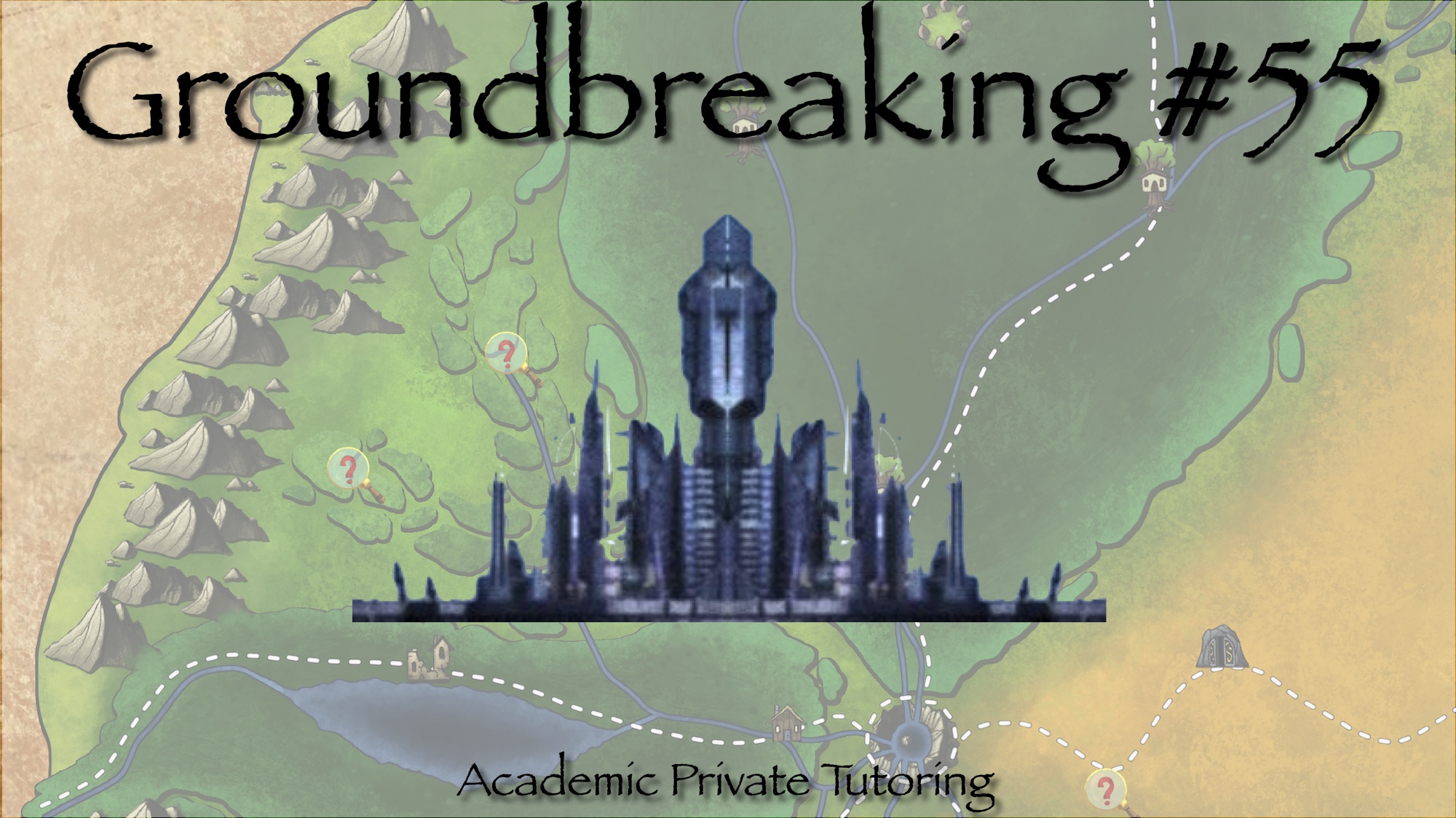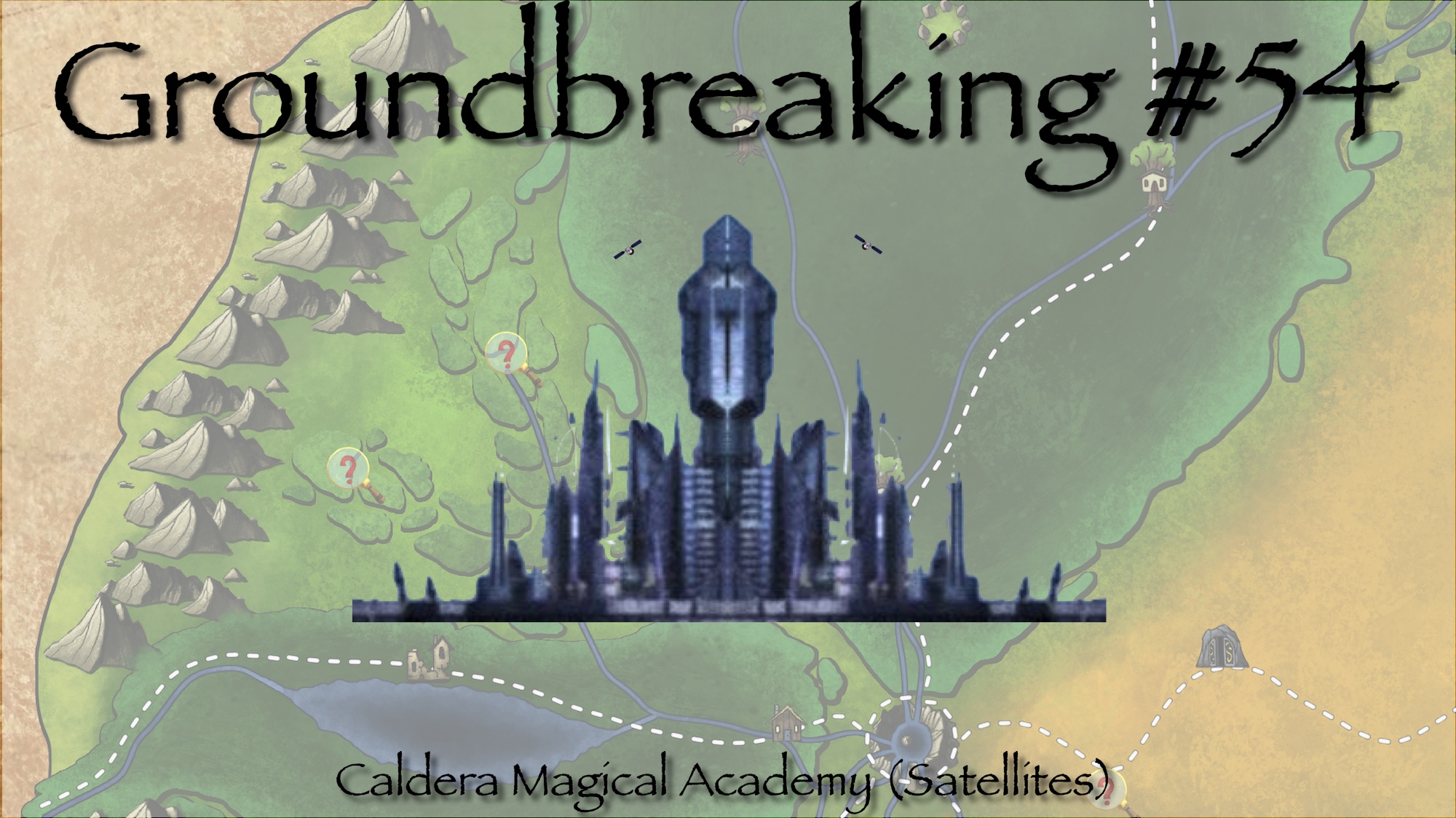Glintwood Clearing’s Elven inspired architecture is nestled under the branches of a massive ash tree that all residents of the Glintwood refer to as Iggy (in honor of the world tree Yggdrasil). Known to residents simply as “The Clearing” many inhabitants of other parts of the forest refer to it as “The City” due to the density and size of the buildings along with the more modern amenities it has, such as rudimentary plumbing from an elaborate aqueduct system.
Randal here, back at more Groundbreaking. Today we are going to take a look at the city of Glintwood Clearing.
Iggy and the Wheel. Iggy’s roots run deep into and under a large pond formed by a natural spring. When the city was first built, the architects of Lakeside Proper’s mill system were hired to design and oversee the construction of an aqueduct system that would lift water from the pond and deliver it to the common rooms of all the buildings being built. The buildings (homes and businesses) closest to Iggy have 4 floors, but as the buildings move further from the center, they become shorter and shorter. This layout serves multiple purposes, including easier access to water, cleaner sight lines from the center out (or the border in), as well as allowing the richest homes and businesses to stand above all others. As the residences facing the tree and pond are the most opulent, the pond itself was modified into a large fountain, complete with statuary over the water source with both form and function (hides some of the mechanisms that enable the water to be piped upwards). The city itself is laid out like a wheel with the tree and pond at the center, circular roads that separate each tier of buildings, major avenues that cut from the center in roughly the compass directions as well as additional “spoke” roads in the southern half of the city that line up with seasonal changes. The eastern and western roads line up with the rising and setting sun during the summer solstice (longest day of the year) while the other spokes provide indicators of the equinoxes and winter solstice.
GM Note. A city that is surrounded by a rain forest, including an unnatural fog, is going to spend a lot of time in shadow and gloom. I thought that lining up the city as a sort of calendar would be a neat way of providing a bit of acceptance of that fact while still showing a love of the sun. Plus, a wheel setup with up to 4th story buildings allows for a higher population density than the size would normally allow and makes sense to me as I would expect inhabitants of this dense a forest to need/want to dwell together for both safety and social reasons.
Population Growth. While it can be easy enough to build a home in a small clearing, building villages in a forest such as the Glintwood is no simple matter. Clearing the land takes a lot of hard work and time, between felling trees, removing stumps, and then hauling them off. When Glintwood was founded, it was apparent that it would take many years (and thus a lot of money) to build out the entire city. A number of the secondary and tertiary families of wealth around the caldera were contacted in regards to moving to the Glintwood to become the new aristocracy. They used their funds to purchase land and existing settlements (locations where multiple families had grouped together) and then to funded the creation of a proper village for those residents (or to draw in residents in unsettled areas). In turn, those residents would pay taxes to their new landlords, which would in turn fund the creation of the city of Glintwood Clearing. While there were those that opposed, overall resistance was minimal after the first year as the clearing of villages allowed for easier farming and safety of livestock. While the population grew enough to support plan, it didn’t reach the numbers projected and over time some families couldn’t recoup their investment and were bought out until there were only eight land owning members of the aristocracy of Glintwood Clearing.
GM Note. That last note is a simple hint that we can use the history of the region’s growth to create some plot threads about the various families (both still in power and those that lost it all).
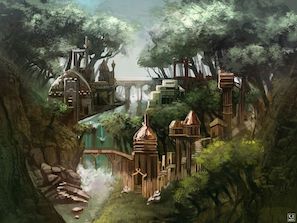 (A Glintwood River Crossing Village)
(A Glintwood River Crossing Village)
Governance. The Glintwood isn’t really known as a place friendly to outsiders. The dense forest causes a bit of isolation, and each village has its own superstitions that stem from this, such that it really takes a local born native to be able to properly communicate with the locals of the numerous villages and towns. Because most of the landlords originally come from outside the forest, the practice of establishing a representative of each settlement became the preferred way of collecting taxes and handing out edicts and rulings. In many cases, this person is a village elder or a town sheriff, but in almost all cases they are voted to the position by their peers. Each landlord is expected to handle any issues that occur within their holdings, while maintaining a seat at the table of landlords in Glintwood Clearing where they are to meet monthly to discuss matters of the forest at large.
Relations. It is this council that responds to any diplomatic requests from the other regions of the caldera. While they don’t like being told to do things by the nobles in Lakeside Proper, they respect their wealth and generally try to play along to curry favor. They tend to dislike the rangers and druids of the Hunting Grounds but also rely on their prowess when any large threats appear, so they tolerate them at arms length. Their strongest relationship is with the largest merchant families of the southern farmlands, and deals with the various landlords and families are constantly being bought, sold, or traded back and forth with each other as crop inventories shrink and grow. Knowing that they are at the limits of the money they can make from their tenants, the landlords are looking for other forms of income, such as “Iggy Infused Tonics.”
GM Note. Mostly a farming community (be it farming crops or berries or fungi) there really isn’t a lot of danger in the grand scheme of things, and so governing the area really comes down to managing the people and the finances more so than creating laws and raising armies. I did leave out any hint of what is on the land owning contracts, so there could easily be a draft clause should you want or need a military.
Transfer of Power. One quirk of the system, implemented due to the financial failings of a number of the original landlords, is that any request (of aid or other support) by a representative that goes unanswered for a month can be taken to any “owner of land”. Should that individual answer the request to the satisfaction of the representative, they then have the option of buying the settlement from the unresponsive owner by making an offer. These offers are presented during a special meeting of the landlords in Glintwood Clearing where the lords not involved vote on the fairness of the offer (taking into account any reasons/rebuttals for the delinquent reply). A unanimous vote forces the current owner to accept the amount and hand over the deed to the purchaser, who does not have to be a current lord of Glintwood. This is, in fact, how a wealthy land owner from Lakeside Proper became one of the top four land owners of The Glintwood.
GM Note. This quirk gives something interesting and different to the area. This could provide plots for the PCs to help solve problems for unresponsive owners, perhaps even buying the settlements themselves afterwards. Lots of room for plots and intrigue should you want it.
Let me know what you think! Please continue to join us at our Discord server https://discord.gg/Rt79BAj.


